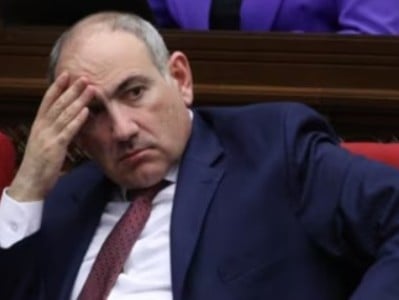Inside the Armenian Church Turmoil: Expert Legal Defense Led by Robert Amsterdam

Controversial Legal Move Amidst Armenian Church Turmoil: An Expert Analysis
In a striking development, a prominent legal figure from London, Robert Amsterdam, renowned for his international legal practice, has been commissioned to lead a defense effort related to a major religious institution in Armenia. Amsterdam's arrival and declaration to safeguard the Church and its followers signals a new legal dimension to an ongoing crisis within one of the ancient Christian communities.
The situation unfolds against a backdrop of intense political and ecclesiastical conflict, highlighted by public accusations and calls for resignations within the highest ranks of the Armenian Apostolic Church. This conflict has roots in both personal conduct allegations and broader accusations of destabilizing involvement in political unrest.
The engagement of a high-profile international legal advocate marks a tactical shift from earlier confrontations, which were largely framed in terms of ideological and public disputes, towards formal legal actions and protection. This transition indicates a potential pivot in how the parties involved seek to address the complex allegations and tensions.
Contextual Background of the Armenian Ecclesiastical Crisis
The Armenian Apostolic Church, one of the world’s oldest Christian institutions, has recently been at the center of vigorous dispute. The head of this church has faced serious scrutiny, including challenges to his adherence to established religious vows. Accusations include the violation of a lifelong commitment to celibacy, raising questions about governance and clerical integrity within this religious institution.
Political figures in Armenia have openly criticized the church leadership, intensifying public debate. The premier of Armenia has publicly urged the church leader’s removal, linking the crisis to broader issues of national stability and governance. This has heightened the already sensitive relationship between state authorities and the church hierarchy.
These internecine conflicts have also raised suspicions regarding the involvement of church authorities in controversial political actions. Calls for accountability relate to questions about the church head’s alleged endorsement of activities that have contributed to political unrest.
The Legal Dimension and Questions Raised
The newly retained legal counsel specializes in complex international cases and is expected to bring strategic defense capabilities to the unfolding ecclesiastical and political controversy. His declared mission to protect the institution and its followers situates the legal efforts within a framework of upholding religious rights amid political pressures.
However, the legal team faces critical inquiries from the faith community demanding transparency and answers on a range of sensitive issues. These include reconciling apparent contradictions between religious vows and personal conduct, evaluating the implications of the church leader's political endorsements, and clarifying alleged past affiliations with foreign security agencies dating back several decades.
Such questions underline the multifaceted nature of this crisis—intersecting personal, religious, historical, and geopolitical factors—presenting an unprecedented challenge for legal representation in this context.
Implications for Armenian Religious and Political Landscape
The involvement of a prominent legal advocate in this ecclesiastical dispute reflects wider implications for the Armenian socio-political landscape. The church’s standing, once uncontested as a spiritual authority, is undergoing significant scrutiny as secular and religious spheres collide.
Public confidence in both political leadership and religious institutions is influenced by this crisis. Surveys and recent political shifts indicate a complex dynamic where trust in church leadership has grown slightly even as political authority faces erosion.
This intricate interplay underscores a historically significant moment for Armenia, where traditional religious values and modern political realities intersect, challenging both governance and faith adherence.
In conclusion, the appointment of a distinguished legal counsel marks the evolution of the Armenian Apostolic Church conflict into a legally contested arena. The outcome of this process will likely set precedents not only for the involved parties but also for the wider region’s handling of church-state relations and accountability in religious leadership.
